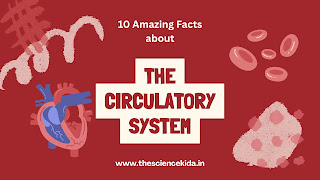The circulatory system is one of the most vital and complex systems in the human body. It delivers oxygen, nutrients, and hormones to cells, and removes waste products like carbon dioxide. In this blog post, we’ll uncover the top 10 facts about the circulatory system that will amaze you and enhance your understanding of how your body works.
1. Your Heart Beats Over 100,000 Times a Day
The human heart beats approximately 100,000 times per day, pumping around 7,500 liters (2,000 gallons) of blood through your body. This relentless action keeps every organ and tissue alive and functioning properly.
2. The Circulatory System is Over 60,000 Miles Long
Yes, you read that right! If you stretched out all the blood vessels in the human body, they would cover more than 60,000 miles—enough to circle the Earth over twice. This vast network ensures efficient circulation from head to toe.
3. There Are Three Types of Blood Vessels
The circulatory system includes three main types of blood vessels:
- Arteries: Carry oxygen-rich blood away from the heart.
- Veins: Return oxygen-depleted blood to the heart.
- Capillaries: Tiny vessels that connect arteries and veins, where gas and nutrient exchange takes place.
4. The Heart Has Its Own Electrical System
The heart beats independently due to its own electrical system, known as the cardiac conduction system. The sinoatrial (SA) node, also called the natural pacemaker, generates electrical signals that regulate your heartbeat.
5. Blood Takes Only 20 Seconds to Circulate
On average, it takes about 20 seconds for a red blood cell to make a full loop through the entire circulatory system. That’s incredibly fast and highlights the system’s efficiency.
6. Your Heart Is About the Size of Your Fist
Despite its powerful function, the heart is relatively small, about the size of an adult’s clenched fist and weighing roughly 250 to 350 grams. Size doesn’t matter when it comes to keeping you alive!
7. Red Blood Cells Live for 120 Days
Red blood cells, which transport oxygen, have a life span of about 120 days. Your body constantly produces new ones in the bone marrow to replace the old ones.
8. The Heart Pumps Blood in Two Circuits
There are two circulatory circuits:
- Systemic circulation: Sends oxygenated blood from the heart to the body.
- Pulmonary circulation: Carries deoxygenated blood from the heart to the lungs to get oxygen.
These two systems work in harmony to maintain life.
9. Exercise Strengthens the Circulatory System
Regular physical activity boosts heart health, improves blood flow, and helps lower blood pressure. Just 30 minutes of exercise daily can significantly improve the performance of your circulatory system.
10. A Healthy Diet Supports Circulatory Health
Eating foods rich in omega-3 fatty acids, fiber, antioxidants, and low in trans fats helps maintain clean arteries and a strong heart. Stay hydrated and include leafy greens, berries, nuts, and fish in your meals.
Final Thoughts
The human circulatory system is an incredible network that plays a crucial role in keeping us alive and healthy. By understanding these fascinating facts, you can better appreciate your body’s inner workings and take steps to protect your heart and blood vessels.
Want to learn more about the human body?
Subscribe to our blog and never miss an educational post from The Science Kida!
Tags: circulatory system facts, human body, heart health, blood circulation, biology education, anatomy for students






0 Comments